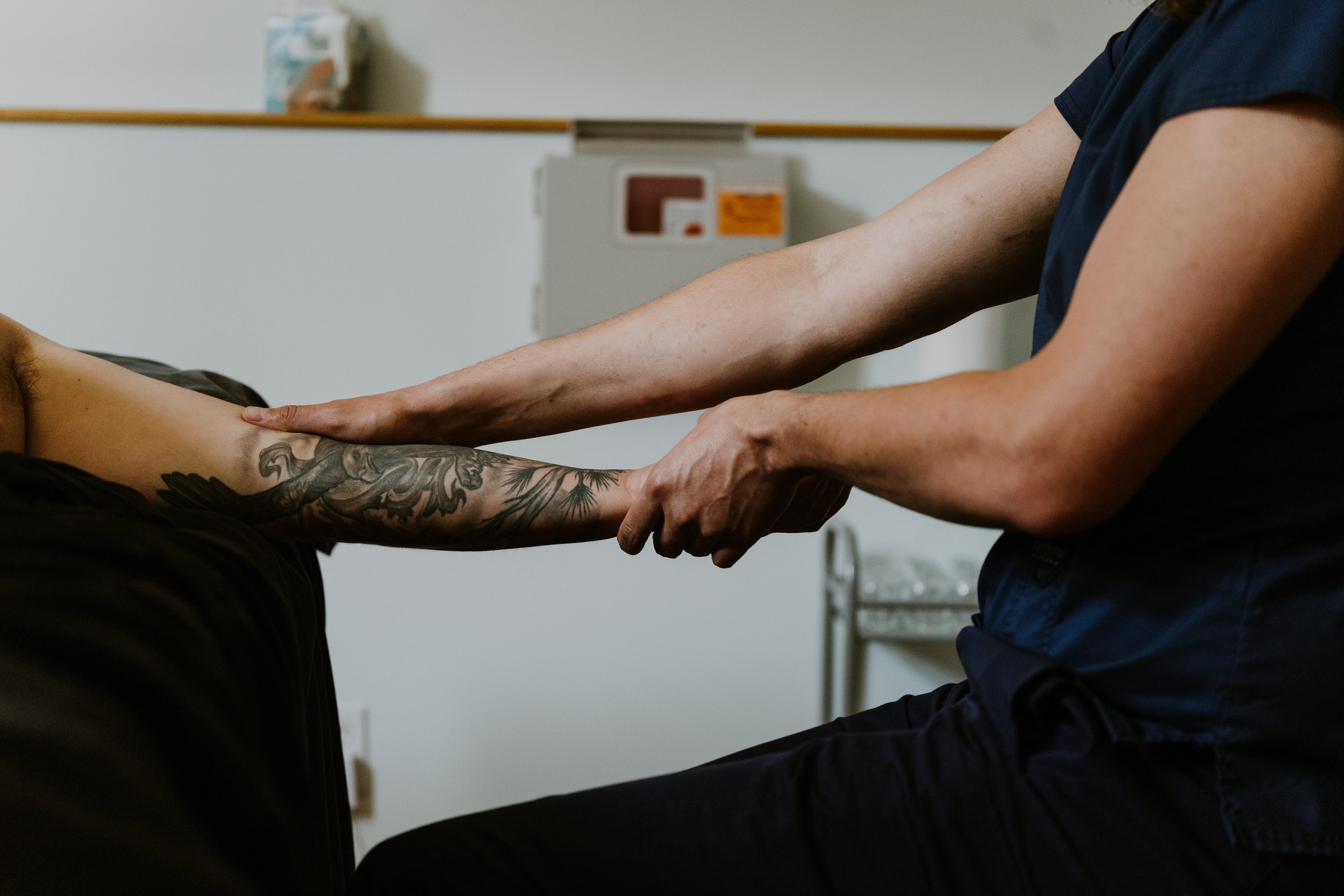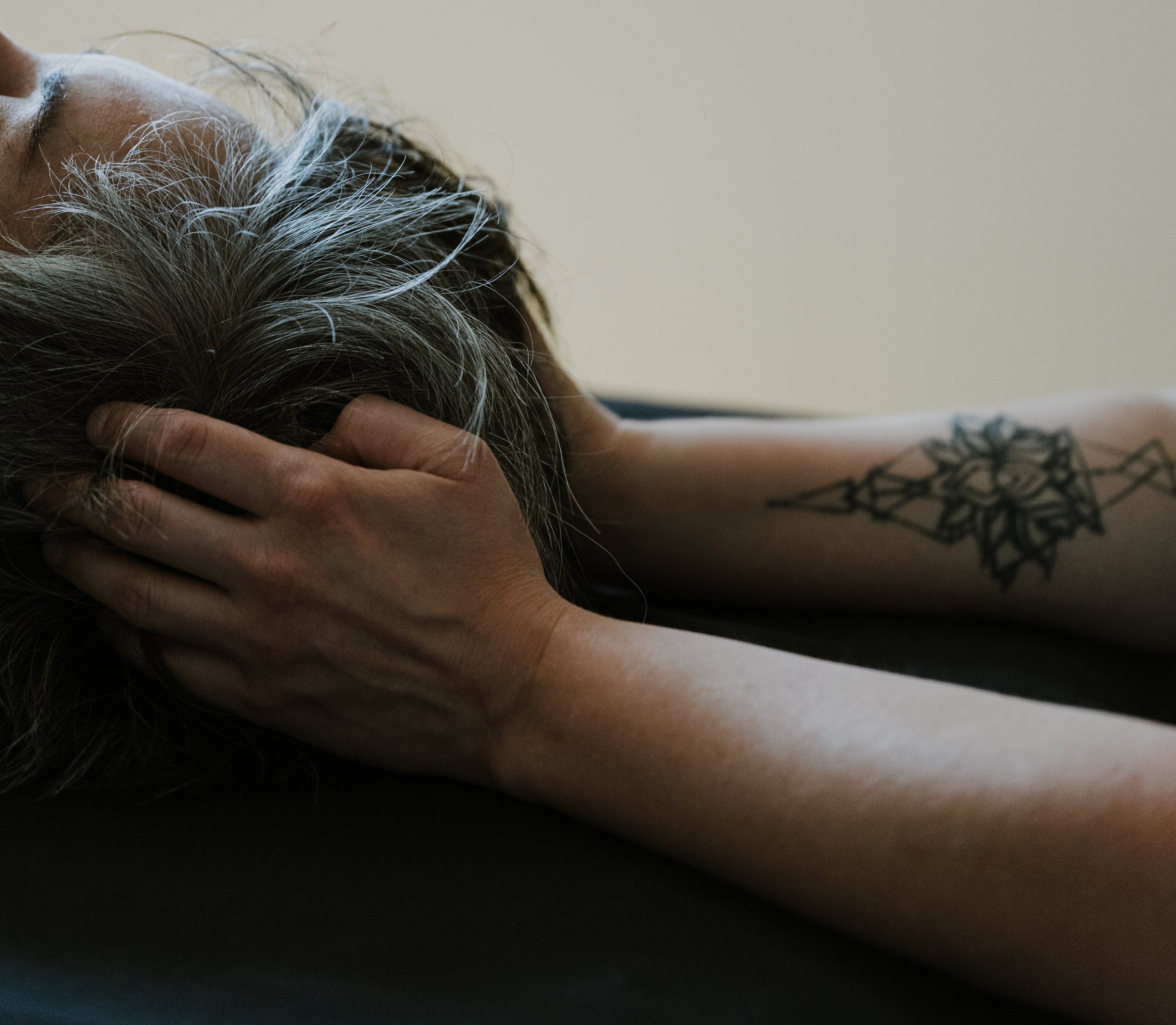What is Integrative Health? Restorative (part 2)
Reiki, Energy Work, & Coaching
This is our second in a 5-part series, “What is Integrative Health?” At MIHS, we define integrative health by these 5 core principles:
Integrative health is holistic.
Integrative health is restorative.
Integrative health is patient-centered.
Integrative health is interdisciplinary.
Integrative health is evidence-based.
There are many definitions of integrative health out there, as the field grows and continues to flourish. The truth is, there is no one “right” definition. At Minnesota Integrative Health Studio, we have been in conversation and developed our own working definition. It will continue to evolve as does the world—and with it, our practices. If you missed part 1, check out What is Integrative Health? Holistic (part 1).
Integrative Health is Restorative
2. Integrative health is restorative. Rather than "fixing," eliminating, curing, or pathologizing, integrative health seeks a return to wholeness and balance, recognizing the innate capacity to heal that exists in all of life.
Conventional Medicine and Pathology
As a system of medicine, conventional (or allopathic) medicine is fundamentally oriented around diagnosing and treating disease, or pathology. (Chaitow, et al., 2008). Consider the classification system of conventional medications: an overwhelming number of drug classes start with the prefix “anti”: antibiotic, anticholinergic, antidepressant, antidiabetic, antihypertensive…the list goes on, and on. This language of opposition is instructive. In the landmark holistic medicine text Radical Healing, Rudolph Ballentine MD noted “the disease-oriented mindset is dominated by a fear of being attacked...” (1998, p. 121)
The capacity to counter life-threatening and health-diminishing processes is both awe-inspiring and humbling. A few years ago, my partner was saved by a timely shot of epinephrine that opposed deadly anaphylactic shock. My dad’s life was both lengthened and enhanced by an inhibitory drug that improved his brain functioning for years. Successful diagnosis and treatment of pathology–or not–shapes and determines the trajectories of our lives, and those of our families, communities, and society at large.
Integrative Health: Moving Beyond “Anti-”
And yet in considering what it is to be healthy and well, we cannot live life only in opposition. We also must ask: what are we for?
Integrative health centers itself in working towards health and wellbeing, not simply against disease. The underlying orientation of integrative health practices is to ally with, rather than oppose, the principles of nature. This means recognizing that our human bodies are part and parcel of the natural world: we are nature. Thus, we possess inherent self-healing capabilities and “the innate capacity for health and wellbeing.” (Koithan & Kreitzer, 2014, p. 9)
Internationally renowned integrative health leader Andrew Weil MD argues that even conventional medicine itself actually works by accessing these innate capacities. In a video describing how conventional medical treatments operate, he notes “[w]hen they work, they don’t work directly; they work indirectly by impinging on the body’s intrinsic mechanisms of healing, unblocking them, facilitating them.” (Weil, 2010).
Many Practices, One Unifying Belief
“Like many patients, I was introduced to integrative medicine when I was at my wit's end with symptoms related to chronic illness. In many Western practices, they target isolated issues rather than viewing the person as a whole, and many of the "fixes" I was prescribed felt like they made my health worse. Integrative health practices work with the body, rather than just working on it, and they accept that healing does not always mean a cure, but a restoration of balance and the body's capacity to heal. Integrative health practices gave me my life back and gave me an understanding of my body that I did not know was missing in the first place.”
Bre Beachy, MIHS Remote HR Specialist
At MN Integrative Health Studio, the underlying assumption that unifies our various practices and modalities is that the human body is inherently capable of healing. The role of the healing practitioner is to support this innate process, by restoring wholeness and balance.
Traditional Chinese Medicine is a system of medicine fundamentally rooted in the notion of balance. Whether employing acupuncture, cupping, herbal medicine, gua sha, tuina, or other modalities, “TCM works to improve the function of Qi in our bodies (improve organ and body systems function), and bring about balance or homeostasis.” Larissa Vados, PhD, LAc.
Craniosacral Therapy, a gentle and intuitive form of bodywork, is said to provide relief and restoration through “self-regulation, self-correction, self-healing.”
Myofascial Release is a practice for returning to balance, a process of “nudging us along our healing journey towards wholeness.”
Reflex Integration for Stress Resilience uses the MNRI (Masgutova Method) which utilizes non-invasive techniques and exercises to support reflex integration, nervous system regulation, and whole-person health.
Reiki is believed to promote balance throughout the human system by working with the biofield, or the body’s subtle vibrational field thought to surround and penetrate the body.
Therapeutic Bodywork What distinguishes bodywork is its holistic perspective on the body. When clients experience pain or dysfunction caused by unhealthy tissue, bodywork practitioners use a combination of techniques, including deep tissue massage, to address the underlying issues and restore balance.
The Science of Self-Healing
This approach to healing is based in science, and the intelligence of the natural world. The concepts of returning to balance are not only philosophical, but rooted in evolving scientific understandings of human physiology. A 2021 paper published in the Journal of Pain Research posits that in treating musculoskeletal pain, integrative medicine approaches draw on the body’s “innate ability to self-heal.” The authors describe self-healing as a complex set of processes that involve the nervous system, circulatory system, immune system, muscular relaxation and contraction, and “psychological balance.”
Our practitioners at MIHS describe the healing mechanisms of their practices in comparable terms. “Acupuncture and other TCM methods are making subtle yet profound changes in the body by decreasing inflammation, improving circulation, improving communication within the nervous system, etc..,” says Larissa Vados PhD, LAc.
In our blog article Hope & the Power of Myofascial Release, MFR practitioner Derrick Lundberg CMT describes the physiological benefits of the gentle, sustained pressure that characterizes MFR sessions. Research suggests that this type of pressure initiates a natural anti-inflammatory process in the tissues, “flood[ing] the area and the tension, pain, and discomfort melt away with a palpable change to the body’s tissues.”
Many of our practices (from acupuncture, to various types of bodywork, to Reiki, and beyond) leverage the restorative mechanisms of the relaxation response to help patients achieve a state of balance. The relaxation response supports the nervous system to shift to a parasympathetic state (“rest and digest”) where mental and physiological stress (“fight or flight”) is eased. When the relaxation response comes online, the heart rate and blood pressure slow, mental activity eases, stress hormones decrease, and neurochemical responses that support relaxation and regeneration circulate in the bloodstream. (Loustaunau, 2024, Baldwin, 2020).
“Wholeness, not conformity”
Commitment to restoring wholeness and balance has far reaching implications for our communities and the world at large in this moment in history. This approach is based in a philosophy of life that is reverent, respectful, and inclusive. Rather than adopt a fearful or oppositional stance, to promote healing we position ourselves in service of life, and the diversity inherent in nature.
Embracing wholeness is essential for individual health, helping us come into compassionate alignment with our full selves—including aspects that we or others may have cast out, or deemed unworthy. More broadly, it supports collective wellbeing at a time when core values of compassion, inclusion, and diversity are under threat. And amidst climate catastrophe, it returns us to the intelligence of nature as a necessity for surviving and thriving. With its orientation toward wholeness and balance, integrative health can provide a blueprint and value system for a flourishing society that honors the inherent dignity of all people, and all of life.
“Fascia is our our body's liquid crystal. In balance, the light of our life shines through this without refraction, but when we have experiences that we are still holding on to, or when we get stuck in old patterns, they block out light from shining through like dirt on the window. There is nothing wrong with who we are, or what we are experiencing…as we feel into these [parts of ourselves] without pathologizing them or shaming ourselves, we can find compassion for the ways we had to show up and realize how we can go forward towards whole expression….Healing is not a destination, it is a journey; choosing routes towards wholeness, instead of choosing to hide behind our experiences of the past.”
“As a trans person, the pathologizing lens that is used in Western healthcare is often anything but affirming towards my gender and body. When I had my first appointment with Said, and eventually with almost every practitioner who works at MIHS, I did not realize how crucial integrative health would be to my gender affirming care. In integrative health, the goal is wholeness, not conformity, affirming that individuals have the right to live in balance with themselves. The lack of affirming care and barriers to care in modern Western clinics have caused many trans and queer people to turn to alternative healthcare practices. With the current politically charged attacks on the trans community, these false narratives are dangerous and increase the barrier to receiving affirming care, especially for trans youth and those who reside in red states. This is why integrative health practices are so crucial; they can provide patients with bodily autonomy, even when people are trying to strip that away.”
Bre Beachy, MIHS Remote HR Specialist
“We are participating in an endless exchange with all living things, with planet Earth in which all living organisms participate, and at the energetic and cosmic level as well.”
Barbara Dossey, PhD, RN, holistic nursing leader (Dossey, Luck & Schaub, 2014, p. 110).
To find out more about Minnesota Integrative Health Studio services, check out our website. You can book online here. Questions? Feel free to contact us, call (612.345.5648), at or stop by “the studio” on our corner of northeast Minneapolis.
Resources
Baldwin, A. (2020). Reiki in Clinical Practice : A Science-Based Guide (1st ed.) Handspring Publishing. Edinburgh.
Ballentine, Rudolph. (1998) Radical Healing. Harmony Books. New York, NY.
Chaitow, J., Snider, P., Buratovich, N., Cronin, M., Orrock, P., Wallden, M. (2008). Chapter 1 - Physical Medicine in a Naturopathic Context (pp. 1-23). Naturopathic Physical Medicine. Churchill Livingstone. ISBN 9780443103902, https://doi.org/10.1016/B978-044310390-2.50006-7. https://www.sciencedirect.com/science/article/pii/B9780443103902500067
Dossey, B.M., Luck, S., Schaub, B.G. (2015). Nurse coaching: Integrative approaches for health and wellbeing. International Nurse Coach Association. North Miami, FL.
Jonas, Wayne (2018). How Healing Works: Get Well and Stay Well Using Your Hidden Power to Heal. New York, NY: Penguin Random House.
Jordan, Meg (2018). Integrative Health Coaching: A Resource Guide for Navigating Complementary and Integrative Health. Novato, CA: Global Medicine Hunter.
Kreitzer, M.J. & Koithan, M. (2014). Integrative Nursing. New York, NY: Oxford University Press.
Loustaunau, Martha O., Ph.D. (2024). Relaxation response. https://www.ebsco.com/research-starters/literature-and-writing/relaxation-response
McCraty R, Shaffer F. Heart Rate Variability: New Perspectives on Physiological Mechanisms, Assessment of Self-regulatory Capacity, and Health risk. Glob Adv Health Med. 2015 Jan;4(1):46-61. doi: 10.7453/gahmj.2014.073. PMID: 25694852; PMCID: PMC4311559. https://www.heartmath.org/assets/uploads/2015/05/Heart-Rate-Variability-New-Perspectives-on-Physiological-Mechanisms-Assessment-of-Self-regulatory-Capacity-and-Health-Risk.pdf
McSwan J, Gudin J, Song XJ, Grinberg Plapler P, Betteridge NJ, Kechemir H, Igracki-Turudic I, Pickering G. Self-Healing: A Concept for Musculoskeletal Body Pain Management - Scientific Evidence and Mode of Action. J Pain Res. 2021 Sep 21;14:2943-2958. doi: 10.2147/JPR.S321037. PMID: 34584448; PMCID: PMC8464648. https://pmc.ncbi.nlm.nih.gov/articles/PMC8464648/
Minnesota Integrative Health Studio. (2025). Hope and the Power of Myofascial Release. https://www.mnintegrative.com/blog/mfr
Pitchford , Paul, (1998). Healing with Whole Foods. North Atlantic Books. Berkeley, CA.
Rubik B, Muehsam D, Hammerschlag R, Jain S. Biofield Science and Healing: History, Terminology, and Concepts. Glob Adv Health Med. 2015 Nov;4(Suppl):8-14. doi: 10.7453/gahmj.2015.038.suppl. Epub 2015 Nov 1. PMID: 26665037; PMCID: PMC4654789. https://pmc.ncbi.nlm.nih.gov/articles/PMC4654789/
Thanh V. Cao, Michael R. Hicks, David Campbell, Paul R. Standley, Dosed Myofascial Release in Three-Dimensional Bioengineered Tendons: Effects on Human Fibroblast Hyperplasia, Hypertrophy, and Cytokine Secretion, Journal of Manipulative and Physiological Therapeutics,Volume 36, Issue 8,2013, Pages 513-521, ISSN 0161-4754, https://doi.org/10.1016/j.jmpt.2013.07.004.https://www.sciencedirect.com/science/article/pii/S0161475413002005
Weil Foundation. Integrative Medicine. https://www.weilfoundation.org/archives/167
Weil, Andrew. How Medical Treatments Really Work. Feb 23, 2010 (video). https://www.youtube.com/watch?v=77QR5XEV8M0














